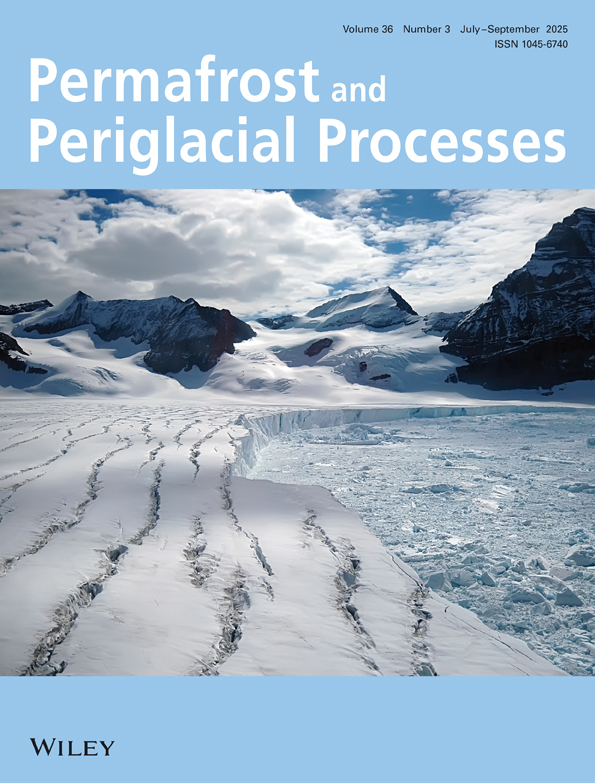Resistivity structures in alas areas in Central Yakutia, Siberia, and the interpretation of permafrost history
Abstract
Deep resistivity structures of permafrost in Siberia were investigated using a transient electromagnetic (TEM) method. The data were compared with temperature profiles. The high and low resistivity layers corresponded to permafrost and a talik, respectively, and the boundary between high and low resistivity was in good agreement with the temperature profile. In TEM surveys conducted from an alas to the taiga forest, the permafrost base was detected at a depth of more than 400 m. This corresponds to the known permafrost depth in this area. A talik was also found to exist at a depth of 100–200 m. Numerical studies indicate that the talik could have been produced by a thermokarst lake. The estimated period after initiation of alas formation agrees with radiocarbon dating results. In combination with the numerical analysis, the geo-electrical information provides a basic model for reconstructing the history of permafrost. Copyright © 2006 John Wiley & Sons, Ltd.




